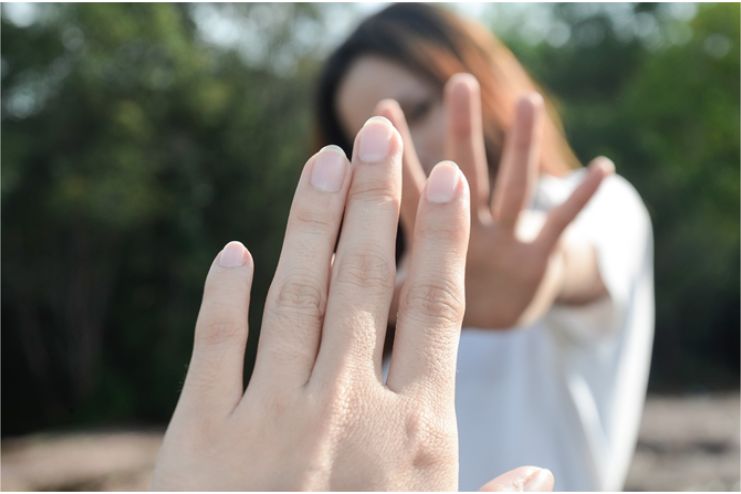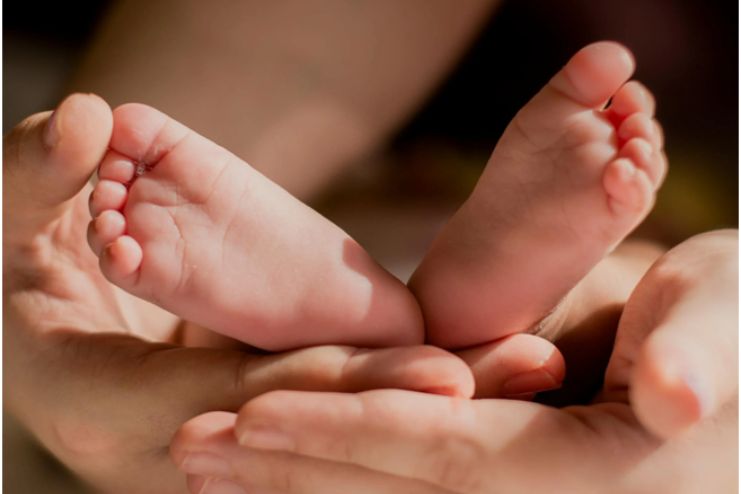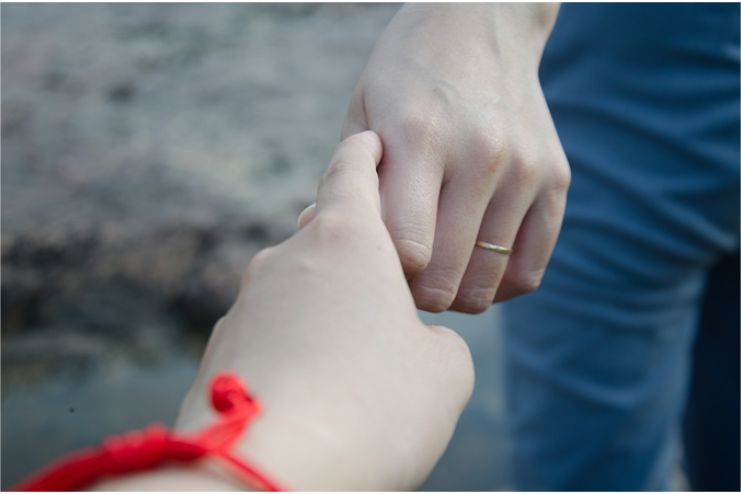Affiliate Disclaimer
Some links in this article are affiliate links. We may earn a small commission if you make a purchase through these links, at no extra cost to you. We only recommend products we find useful to our readersHave you ever been confused in your relationship and did not know what went wrong? Well, that can be an issue of your attachment style. Believe it or not, attachment style is important in any relationship.
Understanding your attachment styles in relationships is essential for building healthier and stronger bonds. Your attachment style or the type of emotional connection you had as an infant with your primary caretaker can impact how you behave in a romantic relationship.
The British psychiatrist John Bowlby and American psychologist Mary Ainsworth first defined the attachment theory, saying that the bonding during that first relationship usually dictates how one will relate to others and respond to intimacy throughout life.
Attachment theory highlights that when a primary caregiver is consistently available to a child and responds to his or her needs, the child develops a sense of security. It forms the foundation for the child, enabling them to confidently explore their world.
As the attachment bond becomes a sturdy foundation for a kid’s developing brain, knowing the attachment style can soon offer precious keys for understanding the likely hurdles that the adult partner faces in relationships.
Although some difficulties may confront an individual, the fact remains that the brain is adaptable and bound to change throughout life. Identifying your unique attachment style can empower you to overcome insecurities, promote healthier patterns in relationships, and nurture deeper, more rewarding connections with others.
Read More: Signs Your Relationship Is Hurting Your Mental Health
What Are Attachment Styles?

According to the psychology of attachment theory, there are four attachment types. Each of the four attachment styles displays different typical characteristics and traits. A person, however, may not fall into a single category, as attachment is a spectrum, and you may not “exactly fit the profile” of a specific style.
Self-awareness aims to go beyond that to identify unhealthy behavior patterns and what one needs to work on to improve one’s love life. This can be achieved by understanding each attachment type’s traits, how they develop, and what these individuals need to feel secure and loved.
Secure Attachment Style
Over 50% of the world’s population is securely attached. Securely attached people are quite at ease with both showing interest and affection to others and enjoying their own company. They enjoy independence and typically show a healthy sense of self-confidence. They can also appreciate the places of different relationships in their lives by setting healthy boundaries to stay within them.
Secure attachment types are more satisfied in their relationships, whether they are romantic partners, family members, or even friends. They can easily accept rejection and move ahead, although it may create a little pain. Still, they have all the attributes to be loyal and sacrifice whenever the time demands.
Insecure Attachment Style
There are three subsets of the insecure attachment style. We will discuss them here briefly, one by one.
- Anxious/Preoccupied: As the labels suggest, people with this attachment style are often anxious and uncertain, lacking in self-esteem. This type is also known as anxious-preoccupied, ambivalent-anxious, or anxious-ambivalent.
They desire emotional intimacy but worry others may not reciprocate.
Anxious attachment-style individuals might be embarrassed that they are too clingy or have a constant need for love and attention-seeking behavior. On the other hand, challenges may arise from feeling suffocated in the relationship due to fears and uncertainties about their partner’s love.
- Avoidant/Dismissive: Adults with avoidant-dismissive attachment style are the opposite of those with anxious-preoccupied attachment style.
People with the avoidant attachment style value their independence and freedom so much that they would feel awkward, even suffocated, with emotional intimacy and closeness to another person, especially in a romantic relationship.
Someone with this attachment style believes they don’t need to be in a special relationship with someone to feel complete. They won’t want to rely on anyone else nor have anyone expect to rely on them, much less seek out assistance and even validation with relationships socially.
- Fearful/Avoidant (Disorganized): The disorganized or disoriented attachment style, also known as the fearful-avoidant attachment style, arises from an intense level of fear acquired usually from childhood trauma, neglect, or abuse. These adults might think that they do not deserve love or closeness in a relationship.
However, the experience of intimate relationships often leaves much confusion and aching disturbance, swinging from emotional extremes of love to hate for a partner.
They may be very emotionally insensitive toward the partner that they love, selfish and greedy, controlling and untrusting, and at times explosive or abusive. They can also be as severe with themselves as they are with others.
How Attachment Styles Develop

Historically, children who stayed close to a caregiver were more likely to get the comfort and protection that they needed to survive and grow into adulthood. How a caregiver, usually a parent, interacts with and responds to a child’s needs lays the foundation for how the child will view and handle relationships later in life.
When caregivers provide a warm, caring environment and respond to the child’s physical and emotional needs—even when they can’t express them clearly—the child is likely to develop a secure attachment.
However, if caregivers fail to meet these needs consistently, even unintentionally, the child may develop an insecure attachment. This happens because the child perceives their needs as unmet, and this impact of neglect is perceived in their attachment patterns.
Secure Attachment Style
Secure attachment is developed when caregivers are responsive, nurturing, and responsive to their child’s needs. These parents interact with their children, creating an environment of safety and trust. Therefore, securely attached children are empathetic, less disruptive, and socially mature. Such a positive basis helps in the development of emotional skills and enables them to develop good relationships throughout life.
Anxious/Preoccupied Attachment Style
When caregivers respond inconsistently to a child throughout the first 18 months of life, the youngster develops an attachment type known as anxious-preoccupied in adulthood. If a caregiver is inconsistent in their attention, the youngster may become confused and feel uneasy. This attachment style makes it difficult for adults to build healthy relationships since they are often afraid of abandonment and want a lot of reassurance.
Avoidant/Dismissive Attachment Style
Avoidant attachment, or dismissive-avoidant in adulthood, develops when caregivers repeatedly become emotionally unavailable or dismissive of their child’s emotional needs. These caregivers tend to ignore emotional cues and do not encourage the expression of emotion. The children develop a sense of self-reliance and emotional detachment. In adulthood, this attachment style is expressed through a desire for independence and an inability to form intense emotional relationships.
Fearful/Avoidant (Disorganized) Attachment Style
Fearful-avoidant attachment, also known as disorganized attachment in childhood, is derived from caregiving that is inconsistent, fearful, or traumatic. Such a style typically develops as a result of childhood trauma or abuse, making them conflicted to want love but fear intimacy. People can shift towards a more secure and positive attachment pattern with effort.
Attachment Styles in Adult Relationships

Attachment styles and emotional intimacy in adulthood may not exactly mirror those from infancy, but early attachments significantly influence later relationships. Adults with secure childhood attachments often have high self-esteem, healthy romantic relationships, and feel comfortable sharing emotions.
Attachment styles also affect how people connect in intimate relationships. Secure individuals are adaptable, can support anxious partners with reassurance, and give avoidant partners the space they need without feeling insecure.
Interestingly, anxious and avoidant types often pair together rather than with their own types. While this might seem surprising, it makes sense: avoidant individuals are skilled at keeping others at a distance, and anxious types are often the only ones persistent enough to break through their barriers and establish a connection.
If You Have a Secure Attachment Style:
- You value yourself and feel comfortable being yourself in a relationship. Expressing feelings, needs, and hopes comes naturally to you.
- You handle conflicts calmly and look for healthy ways to resolve issues in close relationships.
- Even when life brings setbacks or disappointments, you’re resilient and able to bounce back.
If You Have an Anxious Attachment Style:
- You often feel worried or jealous when away from your partner and might use guilt or other tactics to keep them close.
- You crave constant reassurance and attention, wanting closeness but struggling to fully trust or rely on your partner.
- Relationships are important to you, but your fear of abandonment can make you feel insecure.
If You Have an Avoidant Attachment Style:
- You feel uncomfortable with emotions, which may lead others to see you as distant or closed off.
- You tend to downplay your partner’s feelings, keep secrets, or end relationships to maintain your independence.
- You prefer casual connections or partners who don’t demand emotional closeness.
If You Have a Fearful-Avoidant Attachment Style:
- Relationships feel confusing to you, and you may swing between intense love and anger toward your partner.
- You might struggle with negative behaviors, like substance abuse or aggression, that affect your relationships.
- While you long for love and security, fear of getting hurt makes you feel unworthy or anxious about intimacy.
Can Attachment Styles Change?

While early interactions between a parent and child influence a child’s attachment style, these patterns can evolve as the child ages. Researchers suggest that a parent’s influence is most significant during childhood, with other factors playing a larger role in adolescence.
These include social interactions at school or work, romantic relationships, friendships, and experiences such as abuse. These factors can reinforce or alter earlier attachment patterns, showing that attachment styles are not fixed and can adapt based on significant events and the relationships a person forms over time.
Neuroplasticity
If we had insecure attachments early in life, we might face challenges like mistrust, anxiety, or avoidance in our relationships. However, relationship psychology and attachment research show that change is possible through neuroplasticity, the ability of a brain to reorganize and form new connections throughout life. This means our brains can adapt and grow with new experiences.
Memory Reconsolidation
Memory reconsolidation is another helpful process that lets us “rewrite” old memories. When we recall a memory, it briefly becomes flexible, like soft clay, allowing us to change its emotional impact before it settles again. This process is often used in therapy to reshape how we view and respond to past experiences.
For attachment issues, memory reconsolidation can help rework deep beliefs, such as feeling unworthy of love. By processing and changing these memories, individuals can develop healthier ways of thinking and form better, more secure relationships in the future.
Attachment-Based Therapy (ABT)
Though rooted in early life experiences, attachment styles are not fixed and can evolve over time. With the right interventions, individuals can shift from insecure to secure attachment patterns.
Therapy plays a pivotal role in this transformation by offering a safe space to explore past experiences, identify triggers, and develop healthier emotional responses. Attachment-Based Therapy (ABT) focuses on rebuilding trust and fostering secure connections.
Self-awareness is equally vital; by understanding one’s attachment style, individuals can recognize unhealthy patterns and actively work to replace them with constructive behaviors. Engaging in healthy relationships further accelerates this process.
Supportive and empathetic partners or friends can provide consistent emotional safety, reinforce positive interactions, and promote healing. Over time, these combined efforts can lead to lasting changes, empowering individuals to form deeper, more fulfilling bonds. Change is possible, but it requires dedication and openness to growth.
Improving Relationships Through Understanding

Building secure attachments is essential for healthy relationships. One way to cultivate secure attachment is by fostering trust and emotional safety. This involves consistently meeting your partner’s emotional needs, being dependable, and showing genuine care. Understanding these patterns is vital for individuals navigating anxious vs. avoidant attachment.
Nothing beats open communication when bridging a communication gap. It allows partners to voice their feelings and needs without fear of being judged, filling in the gaps in understanding. Emotional intelligence—that is, recognizing, learning, and relating to one’s own or others’ emotions—helps people think before they act impulsively.
When it comes to understanding avoidant attachment behavior, patience and empathy are key. Avoidant individuals may withdraw or seem emotionally distant, not out of indifference, but as a coping mechanism for fear of vulnerability. By creating a non-judgmental space, partners can help avoidant individuals feel secure enough to open up, paving the way for stronger, more trusting relationships.
Tips for Navigating Relationships with Different Attachment Styles
With Secure Partners:
- Appreciate their ability to maintain balance and open communication.
- Foster trust by being honest and reliable.
With Anxious Partners:
- Provide consistent reassurance to ease their fear of abandonment.
- Practice patience, as they may require extra emotional support.
- Avoid triggering insecurities by being transparent about your feelings.
With Avoidant Partners:
- Respect their need for space and independence.
- Focus on building trust without pushing them to open up immediately.
- Encourage emotional sharing over time by creating a non-judgmental environment.
With Disorganized Partners:
- Be patient and understanding, as their behavior may fluctuate.
- Encourage professional help if past traumas affect their relationship patterns.
- Establish clear, consistent communication to reduce confusion.
Conclusion

Understanding attachment styles is one of the keys to constructing healthier, deeper connections. An attachment style shapes how an individual connects with others—trust, support, and showing feelings.
Learn how your attachment styles indicate potential areas for improvement and changes you can make. Understanding how these patterns manifest in your relationships makes it possible to take on challenges with more insight and compassion.
Learning about your attachment style is an important step toward individual growth. This self-understanding will allow you to create stronger emotional connections and build lasting bonds. Take time to reflect on your attachment patterns; they will go a long way toward making relationships delightful and balanced.
References
- https://www.columbiapsychiatry.org/news/how-attachment-styles-influence-romantic-relationships
- https://www.verywellmind.com/what-is-attachment-theory-2795337
- https://positivepsychology.com/attachment-theory/
- https://www.helpguide.org/relationships/social-connection/attachment-and-adult-relationships
- https://markmanson.net/attachment-styles
- https://thewaveclinic.com/blog/how-do-attachment-styles-form-and-change/
- https://www.sadlerbridgeswellnessgroup.com/post/rewiring-attachment-patterns-the-power-of-neuroplasticity-and-memory-reconsolidation
- https://www.attachmentproject.com/blog/emotional-intelligence-attachment/
- https://www.psychologytoday.com/intl/blog/finding-love-the-scientific-take/201709/attachment-styles
- https://www.verywellmind.com/can-your-attachment-style-change-8681272
- https://greatergood.berkeley.edu/article/item/can_you_cultivate_a_more_secure_attachment_style
- https://drjohngkuna.com/how-attachment-styles-affect-your-relationships/
- https://www.ksl.com/article/50187583/coach-kim-how-knowing-your-attachment-style-can-improve-your-relationships
- https://www.attachmentproject.com/blog/secure-attachment-style-infants/
- https://careme.health/blog/attachment-based-therapy-healing-relationship-patterns
In this Article
















